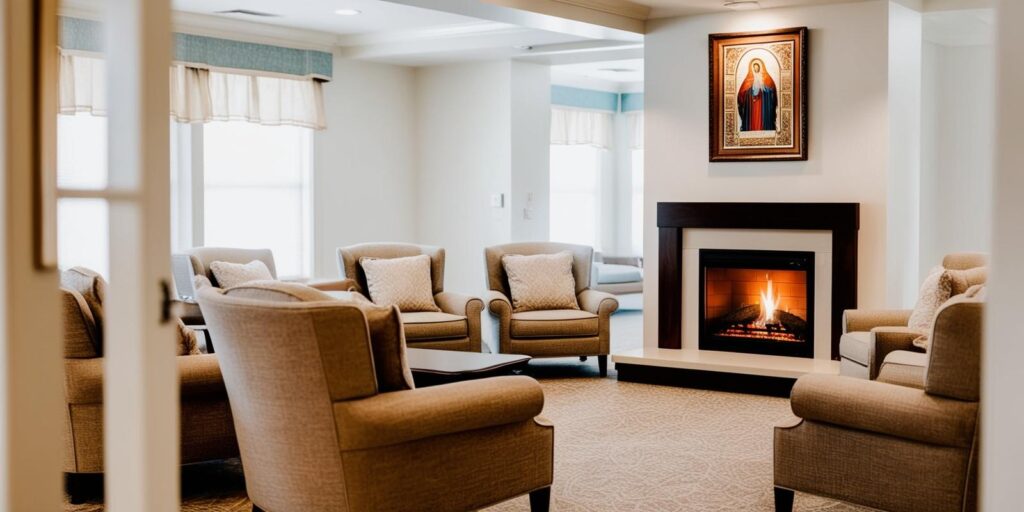
As families navigate the complex decision of finding the right care for aging loved ones, residential assisted living is emerging as a preferred choice over large institutional facilities. Experts in senior care highlight the benefits of these smaller, more personalized settings in ensuring the physical, emotional, and social well-being of older adults. This article compiles insights from leading industry professionals, detailing ten critical aspects that make residential assisted living a superior option.
1. Personalized Care and Attention
Dr. Joanne Lynn, a geriatrician and senior care policy expert, emphasizes that smaller facilities offer a higher staff-to-resident ratio, which allows caregivers to provide more personalized attention. Studies indicate that residents in smaller assisted living homes receive more one-on-one interactions, leading to better health outcomes (Health Affairs).
2. Enhanced Quality of Life
AARP research shows that residents in smaller assisted living homes report higher satisfaction and lower levels of depression compared to those in large institutions. The intimate nature of these facilities fosters stronger relationships among residents and caregivers, reducing the sense of isolation that is common in larger nursing homes (AARP).
3. Reduced Risk of Neglect and Abuse
Fred Steele, a long-term care ombudsman, has raised concerns over inadequate protections in large assisted living chains. His studies highlight that smaller facilities often have better oversight and family involvement, which helps minimize instances of neglect and elder abuse (AARP).
4. Faster Response Times for Assistance
In large institutional settings, response times to resident calls can be unacceptably long. A study by the National Center for Assisted Living found that in facilities with more than 100 residents, response times to urgent needs averaged 10–15 minutes longer compared to smaller homes with under 20 residents. These delays can be detrimental, especially in medical emergencies.
5. Better Staff Retention and Training
Turnover rates in large institutions are significantly higher than in residential care homes. According to a report by Health Affairs, staff in smaller homes tend to stay longer, build better relationships with residents, and receive more specialized dementia care training (Health Affairs).
6. More Homelike Environment
Dr. Bill Thomas, a geriatrician and advocate for aging in place, highlights that residential care homes resemble private homes rather than hospital-like institutions. This setting has been shown to reduce stress, anxiety, and cognitive decline in seniors, particularly those with dementia.
7. Better Food Quality and Dining Experience
Food quality is a major complaint in large facilities, where mass-produced meals can be unappetizing and lack nutrition. AARP reports that residents in smaller care homes often enjoy home-cooked meals, which not only taste better but also promote better nutrition and communal dining experiences.
8. Less Exposure to Communicable Diseases
During the COVID-19 pandemic, larger nursing homes had significantly higher infection rates than smaller residential facilities. A study by the CDC found that smaller assisted living homes had 50% fewer outbreaks due to fewer residents and better infection control practices.
9. Flexible and Personalized Activities
Large facilities often offer a limited range of group activities, while residential care homes tailor activities to residents’ interests. Studies show that personalized engagement helps prevent cognitive decline and enhances emotional well-being.
10. Higher Satisfaction from Families
According to a survey conducted by the National Institute on Aging, families of residents in smaller facilities report higher satisfaction due to more direct communication with caregivers and a sense of involvement in their loved one’s care.
Why Serenity Springs Offers the Best of Residential Assisted Living
At Serenity Springs, we understand that choosing an assisted living facility is a deeply emotional decision. We offer high-end residential care that balances independence, comfort, and expert medical oversight, ensuring that your loved one receives the best possible care.
Unlike large institutions with long hallways, impersonal service, and understaffed facilities, Serenity Springs provides a warm, family-like atmosphere where every resident is treated with dignity and respect.
Don’t wait until a crisis forces the decision—reach out today and let our team help you navigate this transition with compassion and expertise.
References
- Health Affairs. Does Assisted Living Provide Assistance and Promote Living? 2023. Link.
- AARP. Assisted Living: What Caregivers Need to Know. Link.
- National Institute on Aging. Family Satisfaction in Assisted Living Facilities. Link.
- Centers for Disease Control and Prevention. COVID-19 Impact on Senior Care Homes. Link.
